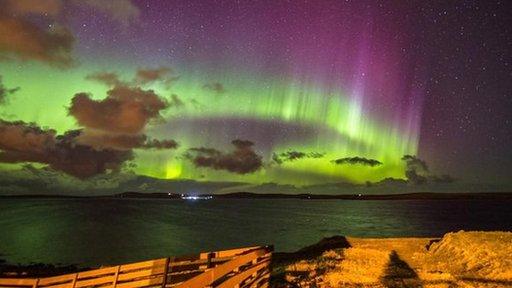Northern Lights photographed off Norfolk coast by aurora hunters
- Published
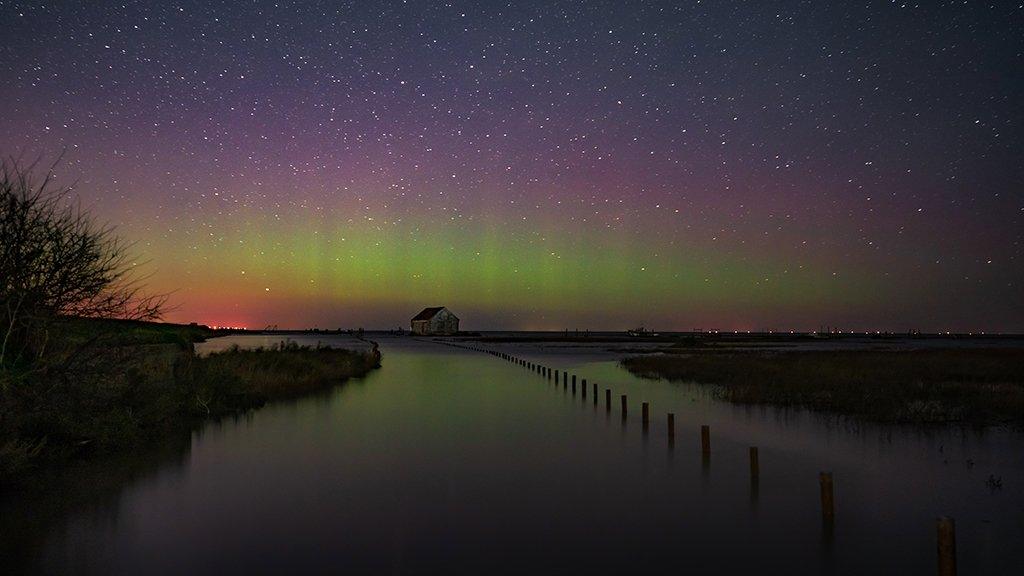
The Northern Lights over Thornham Staithe on the north Norfolk coast
Photographers on the Norfolk coast enjoyed one of nature's greatest displays on Friday when the Northern Lights made an appearance.
The lights, also known as the Aurora Borealis, are the most visible impact of solar activity on Earth.
Gary Pearson, 54, has been taking pictures since he was a child and is a regular at Thornham Staithe, a quayside location in north Norfolk.
"The vista is ever-changing but when you get to see the Northern Lights pulsing over the coal barn it's a real jump-up-and-down moment at what is a magical place," he said.
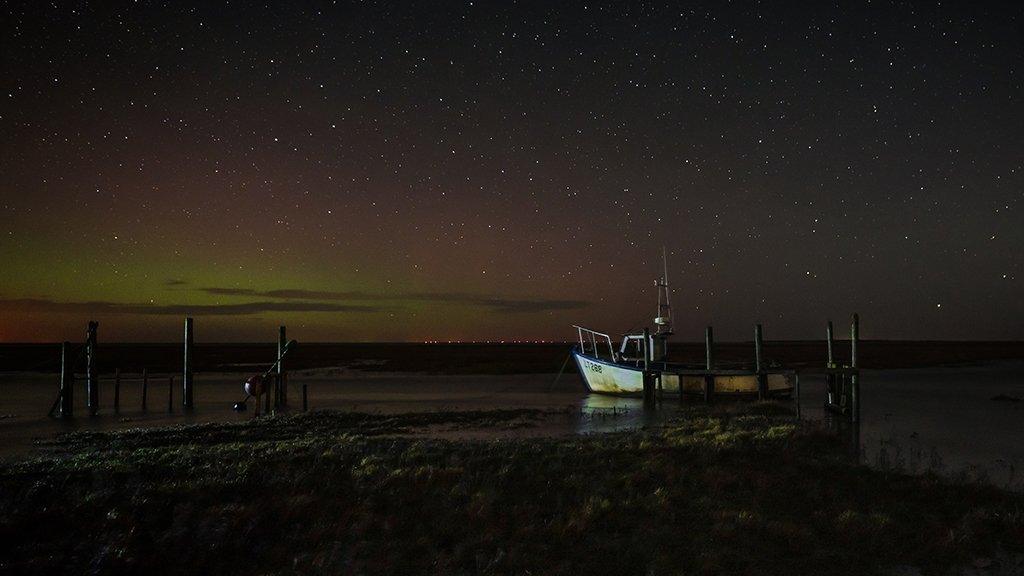
"I relish opportunities like this so jumped in my van for the short trip from Titchwell to Thornham once I knew it looked promising," said Gary Pearson
He said the aurora had "finally paid a proper visit to north Norfolk again", giving him a long overdue chance to photograph on his doorstep a spectacle people travelled to see in such locations as Iceland and Norway.
"The last time I photographed and saw the aurora at Thornham Staithe was in April 2016," he said.
"For someone like me, a photographer who spends pretty much all of their spare time photographing landscapes in search of that elusive perfect photo, it seemed like a lifetime to have to wait nearly six years to get a good showing again."
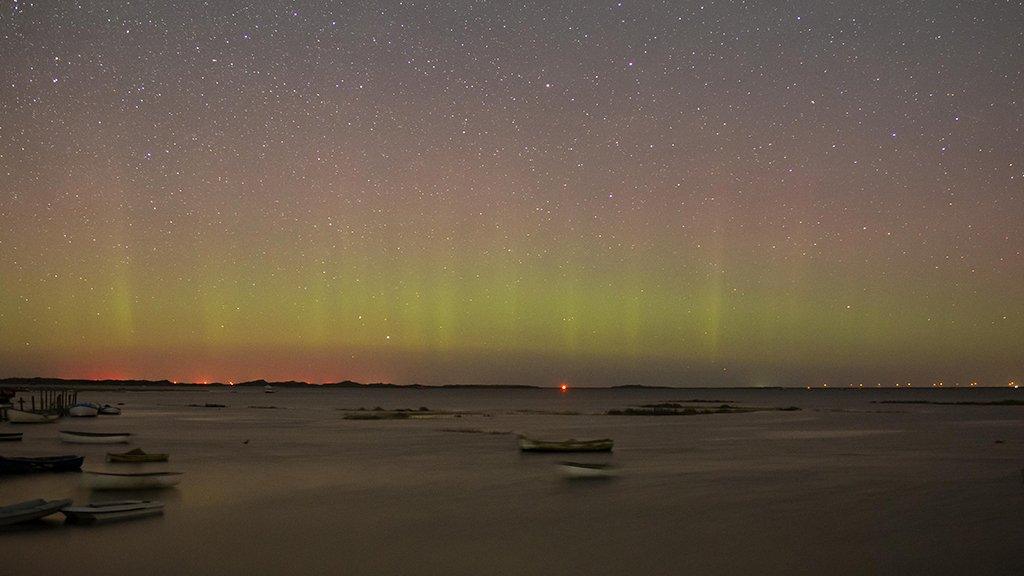
Morston Quay in Norfolk is a popular spot in the county for people trying to photograph the Northern Lights
A few miles further along the coast at Morston, James Rowley-Hill, who runs the Aurora UK group on Facebook, external with more than 18,000 members, was also making the most of the conditions.
"The aurora was visible due to a large magnetic cloud that passed Earth, causing the magnetic field to hold southwards," he said.
"These are generated as a bit of a by-product of solar flares from the sun, and invisible to see, very rare and cannot be predicted, either.
"This was combined with two coronal mass ejections, external that arrived midweek, so the aurora has been visible in Norfolk for a few days, but not as good as last night."
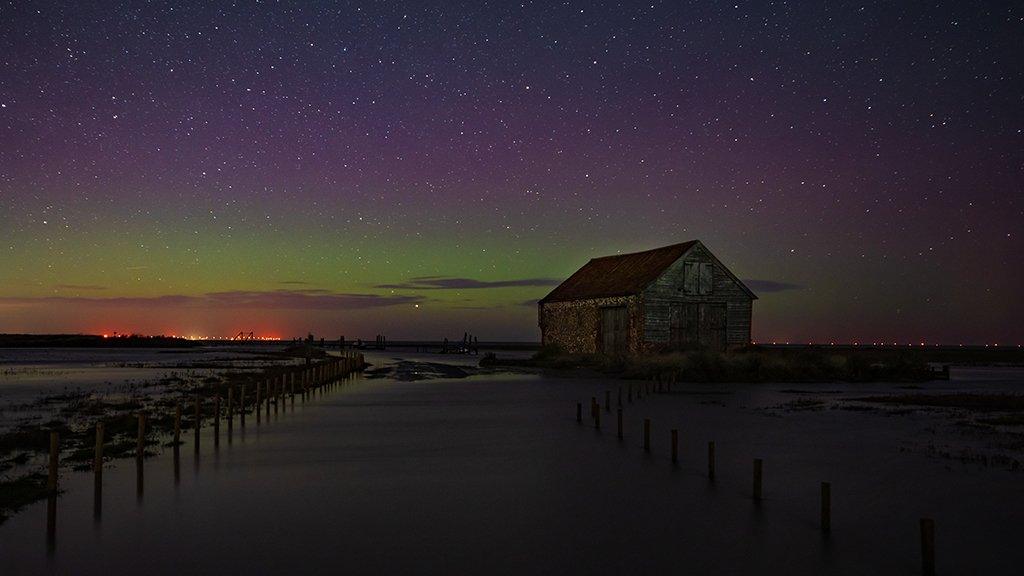
"After letting my eyes adjust to the darkness for at least 15 minutes, to the naked eye the aurora was however a faint green glow on the horizon over the old coal barn at Thornham, but on camera the strength of it was highly visible with bright greens, occasionally reds or purples and even vertical pillars," said Gary Pearson
The Northern Lights start at the sun when a sunspot or coronal hole allows a batch of charged particles to leave the sun and travel towards the Earth on the solar wind.
Most are deflected away, but where the Earth's magnetic field is weakest - at the poles - these charged particles can enter the atmosphere and create the dazzling display so many hope to see.
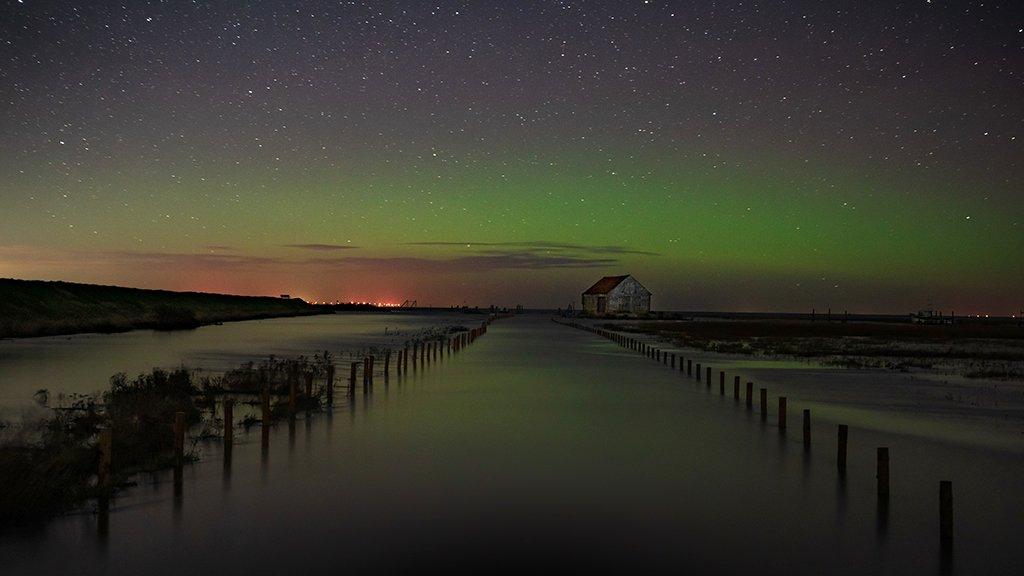
"Fortunately nowadays there are apps and websites that can give a heads up when conditions are right before I make up my mind whether to head out on a bitterly cold and windy night in the hope of capturing them," said Gary Pearson

Find BBC News: East of England on Facebook, external, Instagram, external and Twitter, external. If you have a story suggestion email eastofenglandnews@bbc.co.uk
.
- Published3 February 2022
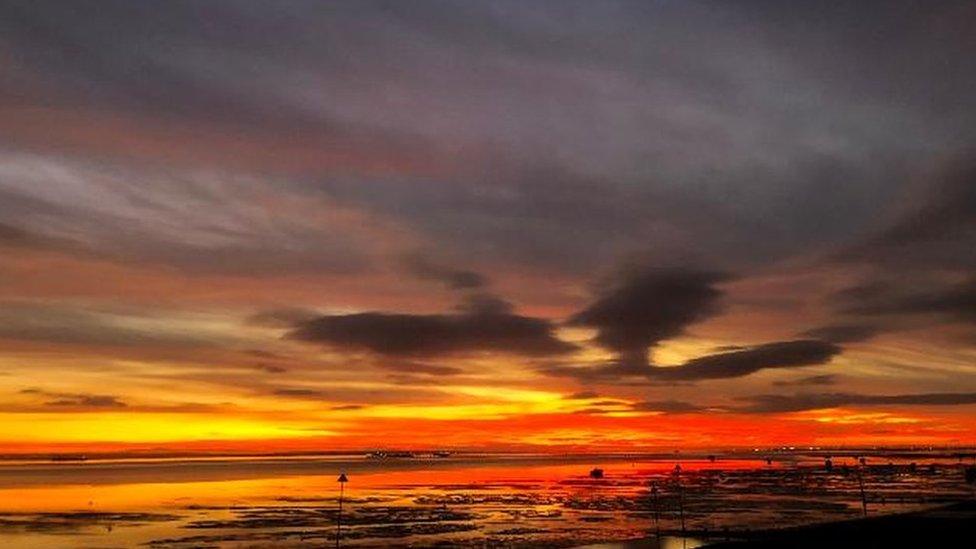
- Published22 January 2022
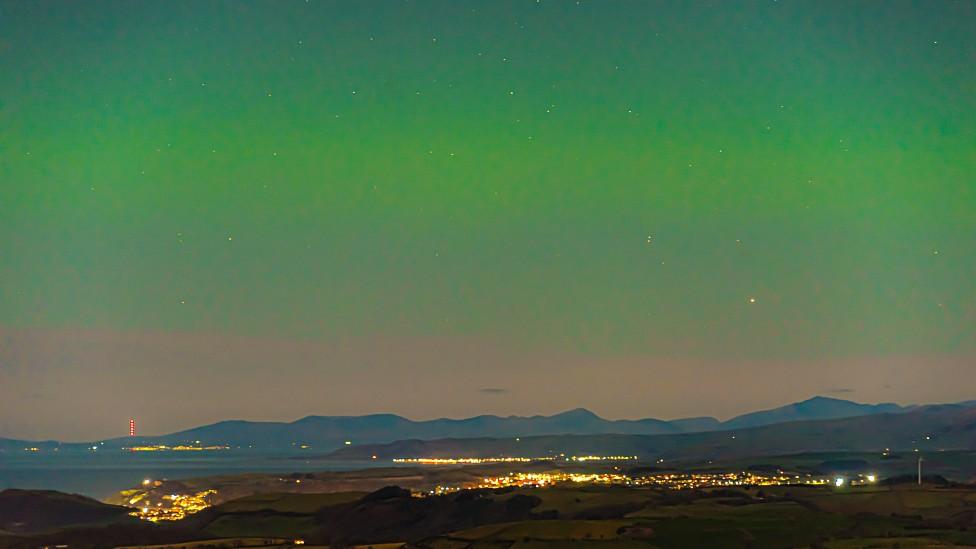
- Published9 January 2022
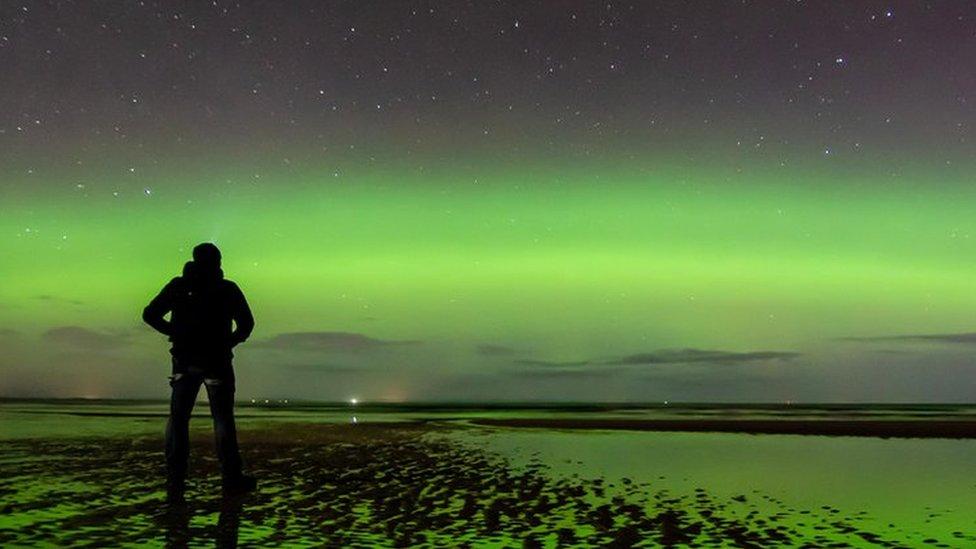
- Published4 November 2021
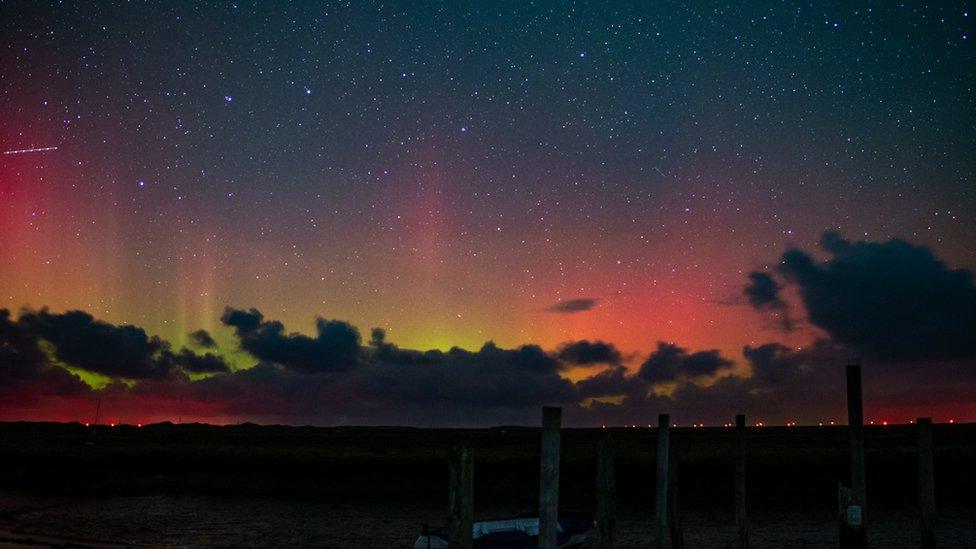
- Published7 April 2019

- Attribution
- Published4 February 2019

- Attribution
- Published22 March 2017
